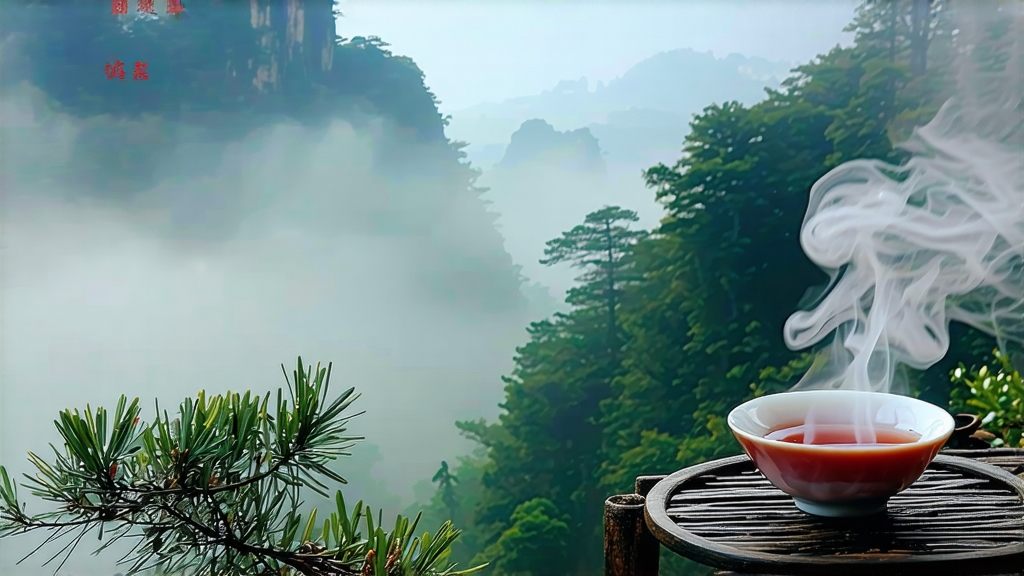
Ask most tea lovers to name a Chinese black tea and they will answer Keemun or perhaps Dian Hong; few realize that the very first black tea ever created was Lapsang Souchong, born in the cool gorges of the Wuyi Mountains in northern Fujian around the late Ming dynasty. Locals still call it “Zheng Shan Xiao Zhong”—“small leaf from the original mountain”—and insist that only leaves picked within the 60 km² core of Tongmu Guan deserve the name. Everything else, no matter how aromatic, is merely an outsider borrowing the legend.
The story begins in 1646 when Qing soldiers pressed southward and tea farmers, fearful that the fresh leaves would wither before they could be processed, rushed the finishing over open pinewood fires. The resulting liquor was deeper, sweeter and carried an unmistakable whiff of campfire; the Dutch traders who received it in Xiamen christened it “bohea” (from the local pronunciation of “Wuyi”) and shipped it to an Europe that was just discovering breakfast tea. By the early eighteenth century Lapsang Souchong was priced higher than silver in London auction rooms, and its smoky perfume inspired the first English blends—Earl Grey began life as an attempt to stretch precious Lapsang with bergamot oil.
Today the State Council has designated Tongmu Guan a protected origin; no foreign visitors are allowed without a special permit, and every household still keeps a tiny pine-fired room no larger than a walk-in closet. The two traditional cultivars are Cai Cha (a mixed seedling population) and the more recent Wuyi Qi Zhong, both selected for slow spring budding and a naturally low tannin that forgives heavy smoke. Picking takes place only between Qing Ming and Grain Rain, when two leaves and a bud are still pale jade and downy. The leaves are withered on bamboo screens set over chestnut-charcoal braziers so that gentle heat drives off moisture without bruising the cell walls; this “warm withering” is unique to Lapsang and accounts for the tea’s glossy strip shape.
Oxidation follows the orthodox black-tea protocol—rolling for 45 minutes under light pressure to rupture 80 % of the cells, then 3–4 hours of rest in wooden troughs kept at 24 °C and 85 % humidity. When the leaf edges turn copper and the aroma shifts from apple to dried longan, the crucial smoke-curing begins. Fresh pinus massoniana and local Chinese red pine are split into arm-thick logs, ignited, then smothered with damp sawdust to create a cool, resinous smoke that never exceeds 35 °C. The tea is spread on sieves stacked three meters above the fire; every twenty minutes the farmer lifts a handful to his cheek, testing for temperature and fragrance. Eight cycles later the leaves have lost another 30 % moisture and absorbed just enough terpene-rich vapor to balance sweetness and tar. A final charcoal bake fixes the style: traditional Lapsang carries a marked but elegant smokiness, while the newer “unsmoked” version (wei xiao zhong) is dried only with hot air and offers a honeyed, raisin-like cup closer to a Keemun.
Grading is refreshingly simple. “Superfine” must be 100 % buds, jet-black and already fragrant before brewing; “Grade 1” allows one open leaf, while “Grade 2” contains larger leaf and delivers a punchier smoke. Connoisseurs look for the so-called “sugar strip”—a glossy, golden vein running the length of the bud—that signals successful warm withering. Inferior imitation Lapsong from India or Africa often smells like liquid ashtray because the leaves were hot-smoked after drying; the genuine article carries hints of longan, lychee and pine resin that arrive in layers rather than one blunt slap.
To brew Lapsang Souchong Western-style, use 2.5 g per 250 ml of freshly drawn water at 95 °C and infuse three minutes; the liquor should be not opaque black but a clear mahogany ringed with a flicker of scarlet when tilted against white porcelain. Drink it neat—the smoke is the seasoning—and pair with salty pastries or aged Gouda. For gongfu service, choose a thin-walled zisha pot seasoned only with black teas